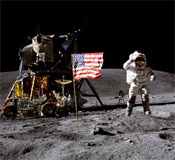United States National Aeronautics and Space Administration

United States National Aeronautics and Space Administration: Publications
Document Type
Article
Date of this Version
2015
Citation
AghaKouchak, A., A. Farahmand, F. S. Melton, J. Teixeira, M. C. Anderson, B. D. Wardlow, and C. R. Hain (2015), Remote sensing of drought: Progress, challenges and opportunities, Rev. Geophys., 53, 452–480
Abstract
This review surveys current and emerging drought monitoring approaches using satellite remote sensing observations from climatological and ecosystem perspectives. We argue that satellite observations not currently used for operational drought monitoring, such as near-surface air relative humidity data from the Atmospheric Infrared Sounder mission, provide opportunities to improve early drought warning. Current and future satellite missions offer opportunities to develop composite and multi-indicator drought models. While there are immense opportunities, there are major challenges including data continuity, unquantified uncertainty, sensor changes, and community acceptability. One of the major limitations of many of the currently available satellite observations is their short length of record. A number of relevant satellite missions and sensors (e.g., the Gravity Recovery and Climate Experiment) provide only a decade of data, which may not be sufficient to study droughts from a climate perspective. However, they still provide valuable information about relevant hydrologic and ecological processes linked to this natural hazard. Therefore, there is a need for models and algorithms that combine multiple data sets and/or assimilate satellite observations into model simulations to generate long-term climate data records. Finally, the study identifies a major gap in indicators for describing drought impacts on the carbon and nitrogen cycle, which are fundamental to assessing drought impacts on ecosystems.


Comments
U.S. Government Work